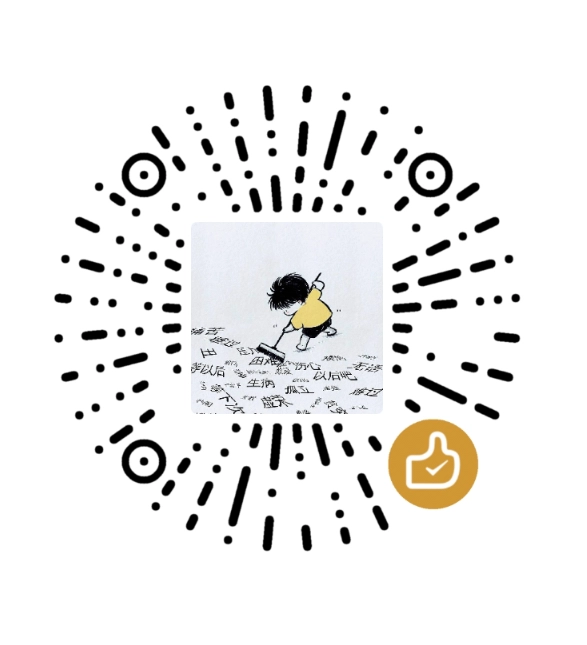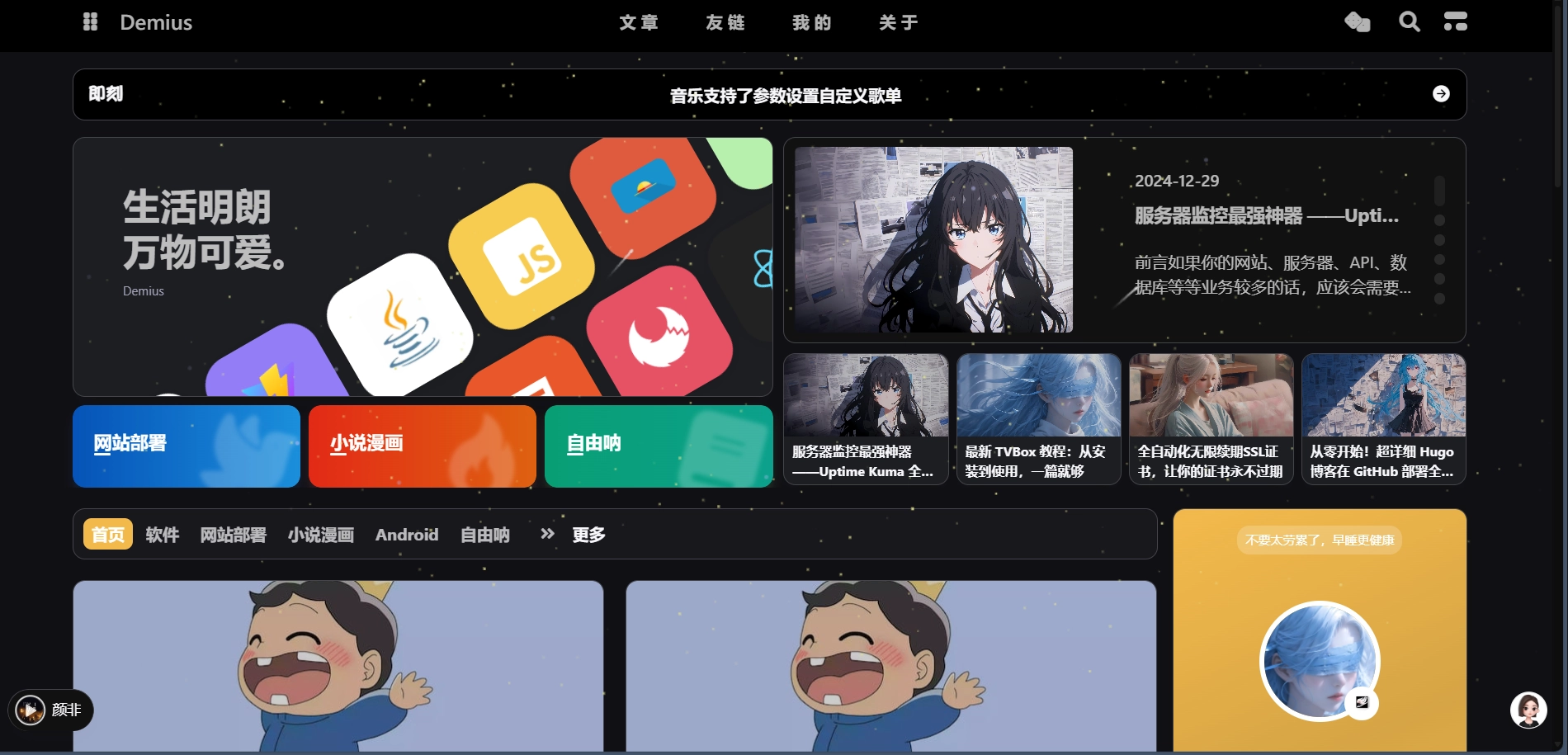自由呐加密【Hexo 实用教程】给文章添加部分内容加密,保护敏感信息又不影响阅读
Mz Xi在运营 Hexo 博客时,你可能会遇到这样的需求:想分享一篇文章,但其中某部分内容(如资源链接、隐私笔记、付费内容)不想公开,只给特定人群查看。这时候「部分内容加密」就比整篇加密更灵活 —— 既保留公开内容的可读性,又能保护敏感信息。
效果演示:
今天就带大家从零实现 Hexo 文章部分加密功能,支持白天 / 黑夜模式适配,新手也能跟着做!
一、为什么需要部分内容加密?
- 场景 1:分享教程时,把「资源下载链接」加密,需要粉丝留言获取密码(提升互动)。
- 场景 2:记录个人博客时,公开内容是技术总结,加密部分是私人踩坑笔记(避免泄露隐私)。
- 场景 3:做会员内容时,公开章节吸引读者,加密后续内容(实现轻量级付费逻辑)。
相比整篇加密,部分加密更符合「半公开半私密」的需求,用户体验更好。
二、实现原理
通过 Hexo 「自定义短代码」功能,用标签
包裹需要加密的内容,前端通过 JavaScript 验证密码:
- 未输入正确密码时:显示密码输入框 + 提示语,加密内容隐藏。
- 输入正确密码后:隐藏输入框,显示加密内容(支持 Markdown 格式)。
- 样式适配:随博客白天 / 黑夜模式自动切换,不突兀。
三、详细实现步骤(共 5 步)
准备工作
确保你的 Hexo 环境正常(已安装 Node.js、Hexo -cli),博客能正常运行(hexo s 可启动本地服务)。
步骤 1:创建自定义短代码脚本(核心)
短代码是 Hexo 的扩展功能,用于将自定义标签渲染成 HTML。我们需要在 Hexo 根目录创建脚本文件,注册 encrypt 标签。
操作:
- 在 Hexo 根目录(如
E:\网站\hexo\blog)下,新建 scripts 文件夹(若已存在则跳过)
- 在
scripts 文件夹中新建 partial-encrypt.js 文件,复制以下代码(含密码输入框提示语功能):
1
2
3
4
5
6
7
8
9
10
11
12
13
14
15
16
17
18
19
20
21
22
23
24
25
26
27
28
29
30
31
32
33
34
35
36
37
38
39
40
41
42
43
44
45
46
47
48
49
50
51
52
53
54
55
56
57
58
59
60
61
62
63
64
65
66
67
68
69
70
71
72
73
74
75
76
77
78
|
hexo.extend.tag.register('encrypt', function(args, content) {
const password = args[0];
const tipText = args[1] ? args[1].replace(/"/g, '') : '密码错误,请重试~';
const customHint = args[2] ? args[2].replace(/"/g, '') : '输入密码即可查看加密内容';
const uniqueId = 'encrypt-' + Math.random().toString(36).substr(2, 10);
return `
<div class="partial-encrypt" id="${uniqueId}">
<!-- 密码输入区域 -->
<div class="encrypt-input-wrap">
<input
type="password"
class="encrypt-pwd"
placeholder="请输入密码"
style="border: 1px solid var(--encrypt-border); background: var(--encrypt-bg); color: var(--encrypt-text);"
>
<button
class="encrypt-btn"
style="background: var(--encrypt-btn-bg); color: white; border: none; cursor: pointer;"
>
解锁
</button>
<!-- 输入框下方提示语 -->
<p class="encrypt-hint" style="color: var(--encrypt-text); font-size: 0.9rem; margin: 0.5rem 0 0; opacity: 0.8;">
${customHint}
</p>
<!-- 密码错误提示 -->
<p class="encrypt-error" style="color: #ff4d4f; font-size: 0.9rem; margin: 0.5rem 0 0; display: none;">
${tipText}
</p>
</div>
<!-- 加密内容(默认隐藏) -->
<div class="encrypt-content" style="display: none; margin-top: 1rem; padding-top: 1rem; border-top: 1px dashed var(--encrypt-border);">
<!-- 渲染 Markdown 内容(支持加粗、列表、链接等) -->
${hexo.render.renderSync({ text: content, engine: 'markdown' })}
</div>
<!-- 密码验证逻辑 -->
<script>
(function() {
const container = document.getElementById('${uniqueId}');
const pwdInput = container.querySelector('.encrypt-pwd');
const btn = container.querySelector('.encrypt-btn');
const errorMsg = container.querySelector('.encrypt-error');
const content = container.querySelector('.encrypt-content');
const correctPwd = '${password}';
// 验证密码函数
function checkPassword() {
if (pwdInput.value.trim() === correctPwd) {
// 密码正确:隐藏输入区,显示内容
container.querySelector('.encrypt-input-wrap').style.display = 'none';
content.style.display = 'block';
errorMsg.style.display = 'none';
} else {
// 密码错误:显示提示
errorMsg.style.display = 'block';
}
}
// 点击按钮验证
btn.addEventListener('click', checkPassword);
// 按 Enter 键验证(优化用户体验)
pwdInput.addEventListener('keydown', (e) => {
if (e.key === 'Enter') checkPassword();
});
})();
</script>
</div>
`;
}, { ends: true });
|
代码说明:
- 支持自定义「密码错误提示语」和「输入框下方提示语」(后续会讲如何使用)。
- 用 CSS 变量(如
--encrypt-border)适配主题模式,避免样式突兀。
- 支持 Markdown 语法(加密内容可加加粗、列表、链接等)。
步骤 2:配置样式(适配白天 / 黑夜模式)
为了让加密区域和博客主题融合,需要在静态 CSS 文件中定义「主题模式变量」,确保切换白天 / 黑夜时样式自动调整。
操作:
- 在 Hexo 根目录的
source 文件夹下,找到 css 文件夹(若没有则新建)
- 在
css 文件夹中新建 custom.css 文件(或使用主题自带的自定义 CSS 文件,如安知鱼主题的 _custom/custom.css),复制以下代码:
1
2
3
4
5
6
7
8
9
10
11
12
13
14
15
16
17
18
19
20
21
22
23
24
25
26
27
28
29
30
31
32
33
34
35
36
37
38
39
40
41
42
43
44
45
46
47
48
49
50
51
52
53
54
55
56
57
58
59
60
61
62
|
:root {
--encrypt-border: #e0e0e0;
--encrypt-bg: #ffffff;
--encrypt-text: #333333;
--encrypt-btn-bg: #4096ff;
}
html.darkmode--activated {
--encrypt-border: #444444;
--encrypt-bg: #1a1a1a;
--encrypt-text: #eeeeee;
--encrypt-btn-bg: #4dabf7;
}
.encrypt-pwd {
padding: 0.5rem 0.8rem;
border-radius: 4px;
outline: none;
margin-right: 0.5rem;
flex: 1;
min-width: 180px;
}
.encrypt-pwd:focus {
box-shadow: 0 0 0 2px rgba(64, 150, 255, 0.2);
}
.encrypt-btn {
padding: 0.5rem 1rem;
border-radius: 4px;
transition: background-color 0.2s;
}
.encrypt-btn:hover {
background-color: var(--encrypt-btn-hover, #1677ff);
}
.encrypt-input-wrap {
display: flex;
align-items: flex-start;
flex-wrap: wrap;
gap: 0.5rem;
padding: 1rem;
border-radius: 8px;
background-color: var(--encrypt-bg);
border: 1px solid var(--encrypt-border);
}
@media (max-width: 768px) {
.encrypt-input-wrap {
padding: 0.8rem;
}
.encrypt-pwd {
min-width: 100%;
margin-right: 0;
margin-bottom: 0.5rem;
}
.encrypt-btn {
width: 100%;
}
}
|
关键提醒:
- 若你的主题黑夜模式类名不是
darkmode--activated(如部分主题用 dark),需修改 html.darkmode--activated 为 html.dark(可通过浏览器 F12 查看主题切换时 html 标签的类名)
- 可根据博客主色调整
--encrypt-btn-bg(如主题是红色,改为 #ff4d4f),让按钮更融入页面
步骤 3:确保 CSS 被主题加载
如果博客主题没有自动加载 custom.css,需要手动引入,否则样式不会生效。
操作(以安知鱼主题为例):
- 进入主题文件夹:
themes/anzhiyu/layout/_partial
- 找到
head.ejs 文件(或 head.njk,根据主题模板引擎而定),在 <head> 标签内添加以下代码:
1
2
|
<link rel="stylesheet" href="/css/custom.css">
|
或者在主题的配置文件_config.anzhiyu.yml中引入:
1
2
3
4
5
6
7
8
9
10
11
|
inject:
head:
- <link rel="stylesheet" href="/css/custom.css">
|
验证:
启动博客后(hexo s),打开浏览器 F12 → 「Elements」→ 搜索 custom.css,若能找到对应的 <link> 标签,说明加载成功
步骤 4:在文章中使用部分加密
配置完成后,在 Markdown 文章中用
标签包裹需要加密的内容即可,支持自定义密码和提示语
基础用法(默认提示语):
1
2
3
4
5
6
7
8
9
10
11
12
13
| # 【教程】如何用 Hexo 搭建个人博客
这是公开内容:Hexo 是一款基于 Node.js 的静态博客框架,轻量且高效...
<!-- 加密部分:密码为 123456,默认提示语 -->
{% encrypt 123456 %}
## 隐藏内容:Hexo 插件推荐
1. hexo-deployer-git:一键部署到 GitHub Pages
2. hexo-prism-plugin:代码高亮插件
3. hexo-blog-encrypt:整篇文章加密(本文用的是部分加密)
{% endencrypt %}
这是后续公开内容:搭建完成后,记得执行 `hexo clean && hexo g && hexo s` 预览...
|
进阶用法(自定义提示语):
支持自定义「密码错误提示」和「输入框下方提示」,格式为:
1
| {% encrypt 密码 "密码错误提示语" "输入框下方提示语" %}
|
示例:
1
2
3
4
5
| {% encrypt 202509 "密码不对哦~提示:2025年9月" "密码是文章发布月份(如 202509)" %}
## 加密资源:Hexo 主题包下载
- 链接:https://pan.baidu.com/s/xxxxxx(提取码:hexo)
- 说明:包含 3 款热门主题(安知鱼、Butterfly、Matery)
{% endencrypt %}
|
步骤 5:测试效果并发布
- 清除 Hexo 缓存(必做!否则配置不生效):
- 启动本地服务预览:
- 打开浏览器访问
http://localhost:4000,查看文章:
- 未输入密码:显示输入框 + 提示语,加密内容隐藏。
- 输入正确密码:隐藏输入框,显示加密内容。
- 切换主题模式:加密区域样式自动适配(边框、背景色变化)。
- 确认效果无误后,部署到博客平台(如 GitHub Pages):
四、常见问题 FAQ(避坑指南)
1. 提示「unknown block tag: encrypt」(标签不识别)
- 原因:脚本文件路径错误(未放在根目录
scripts 文件夹),或脚本未被加载。
- 解决:
- 确认脚本路径:
根目录/scripts/partial-encrypt.js(与 themes、source 同级)。
- 执行
hexo clean 清除缓存,再重新生成。
2. 样式不生效(输入框 / 按钮很丑)
- 原因:
custom.css 未被主题加载,或 CSS 变量与主题冲突。
- 解决:
- 检查
head.ejs 中是否添加了 <link rel="stylesheet" href="/css/custom.css">。
- 通过浏览器 F12 查看元素样式,确认
var(--encrypt-border) 等变量是否被正确解析。
3. 黑夜模式下样式没变化
- 原因:主题黑夜模式的类名与 CSS 中的
html.darkmode--activated 不匹配。
- 解决:
- 切换到黑夜模式,按 F12 查看
html 标签的类名(如 dark)。
- 修改 CSS 中
html.darkmode--activated 为 html.dark(或对应类名)。
4. 加密内容中的 Markdown 不渲染(显示原始语法)
- 原因:脚本中未启用 Markdown 渲染引擎。
- 解决:确认脚本中
hexo.render.renderSync 包含 engine: 'markdown'(代码中已默认添加)。
五、进阶优化(可选)
1. 提高密码安全性(避免明文存储)
目前脚本中密码是明文存储在 HTML 中,可通过 CryptoJS 对密码进行哈希处理(需额外引入库):
- 安装 CryptoJS:
npm install crypto-js --save。
- 在脚本中加密密码:
1
2
| const CryptoJS = require('crypto-js');
const correctPwdHash = CryptoJS.MD5(password).toString();
|
- 前端验证时对比哈希值:
1
2
| const inputHash = CryptoJS.MD5(pwdInput.value.trim()).toString();
if (inputHash === correctPwdHash) { ... }
|
置统一密码
若多篇文章需要相同密码,可在 _config.yml 中配置全局密码:
1
2
3
|
partial_encrypt:
default_password: 202409
|
然后在脚本中读取全局密码:
1
2
| const defaultPwd = hexo.config.partial_encrypt.default_password;
const password = args[0] || defaultPwd;
|
3. 添加密码记忆功能(Cookie)
通过 Cookie 记录用户输入的正确密码,刷新页面后无需重新输入:
1
2
3
4
5
6
7
8
|
document.cookie = `encrypt_pwd_${uniqueId}=${correctPwd}; path=/; max-age=86400`;
const cookiePwd = document.cookie.replace(/(?:(?:^|.*;\s*)encrypt_pwd_${uniqueId}\s*=\s*([^;]*).*$)|^.*$/, '$1');
if (cookiePwd === correctPwd) {
content.style.display = 'block';
container.querySelector('.encrypt-input-wrap').style.display = 'none';
}
|
六、总结
通过「自定义短代码 + CSS 变量适配」,我们实现了 Hexo 文章的部分内容加密功能,既满足了隐私保护需求,又不影响公开内容的阅读体验。整个教程从脚本创建到样式适配,再到问题解决,覆盖了新手可能遇到的所有场景,跟着步骤做就能成功。
如果你的博客也有「半公开内容」的需求,不妨试试这个方案,让博客功能更灵活~ 有问题欢迎在评论区留言讨论!
ps: 有很多地方没有完善,包括黑夜白天模式切换,短代码识别问题,浏览器兼容等等,后续慢慢完善,欢迎大家一起讨论,一起完善。








